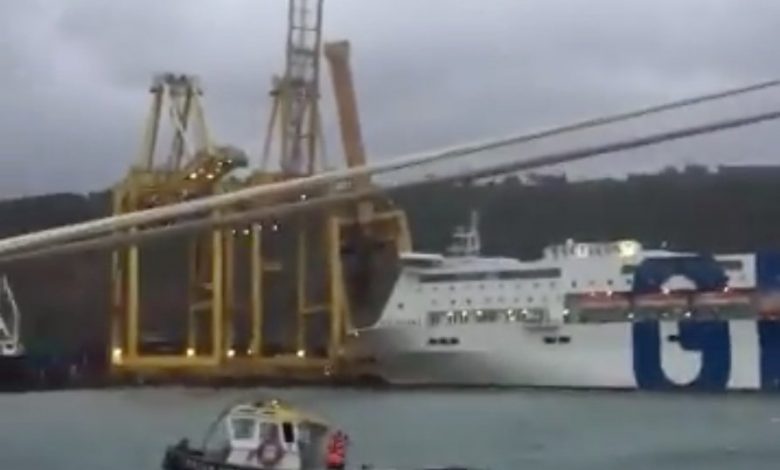As cranes continue to tumble, ports are urged to install laser sensor technology

With quay cranes tumbling around the world in recent months insurer TT Club has urged port operators to install laser sensor technology to avoid costly accidents.
Nine days ago a ropax slammed into a crane in Barcelona, destroying the crane and setting off a sizeable fire. The day before a crane at Port Elizabeth, South Africa blew over in high winds trapping four ships within the port.
TT Club claims analyses continue to flag quay crane issues as giving rise to the highest cost incidents for ports and terminal operators. Remarkably TT Club has handled 325 cases of crane collisions in the last 10 years. This includes mobile harbour cranes (MHC), container cranes, bulk crane loader and unloaders. And collision risks comprise more than 50% of the costs, all of which can be mitigated by different anti-collision technologies, whether in full or part. Furthermore, 20% of the costs relating to quay crane issues arise in boom to ship collisions.
For such incidents, the TT Club advises laser technology is capable of preventing the collision entirely and is far superior than the more commonly used trip wires.
“[T]he trip wire system is really only a boom collision detection system,” TT Club reported in a note to clients. “The trip wire may appear cheap, but requires maintenance to keep tension on the wire. Fundamentally, however, the trip wire is ineffective since it is typically only activated about one metre from the boom, whereas a crane moving at full speed may travel 3.5 metres before stopping.”
TT Club said laser technology is economically viable when looking at the potential costs, damage, delays and injuries caused.

Don´t go by this way. Pilots an Companies are in hurry. This is the question